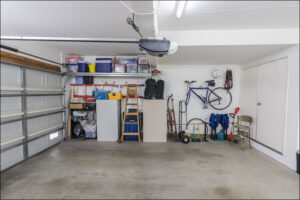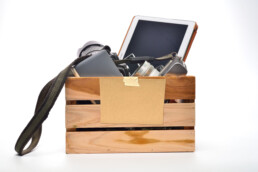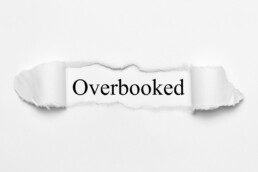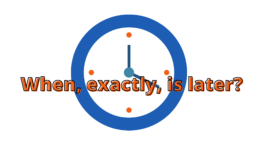The Value of a Planner
How good is your memory? Is short term memory a problem for you? Or is long term memory more difficult? Or are they equal? My memory is all over the place. I went to the market to buy juice and bought everything I hadn’t needed, but no juice. That’s what makes a list important. It’s planning ahead.
To know when your appointments are, or things you want or have promised to do, it makes sense to write them down. And you must write them all in the same place. Thus, a planner. Or a calendar of sorts will do. That way you have one place to turn to every day to see what you’ve got going that day, or to look ahead at the week, or even the month.
There are so many planners out there I could spend hours telling you about them and still not get through them all. There are entire planner systems designed for making and achieving goals. Someone has created a planner for just about every aspect of life. Paper or electronic, you could plan yourself to your last breath. Or you could keep a simple calendar and look at it regularly.
 My dentist always asks me about scheduling an appointment six months out from my current appointment. E.g. “Are you free September 4th?” How would I know that? Fortunately, I have a calendar in my phone and can scroll to September, check the date, and enter the dentist appointment. Now I won’t schedule anything else for that time. I may even set a reminder to make sure I leave the house on time.
My dentist always asks me about scheduling an appointment six months out from my current appointment. E.g. “Are you free September 4th?” How would I know that? Fortunately, I have a calendar in my phone and can scroll to September, check the date, and enter the dentist appointment. Now I won’t schedule anything else for that time. I may even set a reminder to make sure I leave the house on time.
I have a friend I have dinner with every Saturday. If I call her earlier in the week to make a plan (in case we need a reservation), she never has an answer. Only on Saturday afternoon can she come up with an idea. She does not have a planner.
To take charge of your life you need to plan how your life will unfold rather than just letting it happen.
Life is never as easy as we plan it to be; however, having a planner makes the bumps of real life easier to deal with.
- Sydney Metrick
Three Really Great Problem Solvers!
Do any of these sound familiar?
- You have a great idea in the shower and then forget it by the time you’re dressed.
- A task you thought might take an hour actually takes three.
- You sometimes get so caught up in one thing that you’re late for something else.
- Prioritizing your schedule to address all your “to do’s” feels impossible.
 Solutions exist. I like things to be simple and easy to use so these three tools have passed muster. They are AquaNotes, Time Timer, and Planner Pads.
Solutions exist. I like things to be simple and easy to use so these three tools have passed muster. They are AquaNotes, Time Timer, and Planner Pads.
- Because they say it best, I’m just going to quote from the AquaNotes website: “If you find that some of your best ideas and insights are generated in the tranquility and solitude of the shower...then AquaNotes® is for you! These waterproof notepads help you capture and preserve your ideas before they're forgotten!” The 40 sheet, refillable pad suctions to your shower wall and even comes with matching pen.
- Time Timer has a line of timers, watches, and applications that helps you stay on track. By setting the amount of time you want to spend on a task, Time Timer provides a bright visual of the time gradually elapsing – letting you know when you are getting to the finish – and an alarm to tell you when you are done and need to move on.
- The Planner Pad is an easy-to-use system that help you organize, prioritize, and schedule in ways that make sense. They even have a way of keeping track of items that didn’t get done.
Even the websites are user friendly. Check them out. Let me know if you start using any of them and tell me about your experience.
- Sydney Metrick
Pandora’s Box
Do you have a drawer o box of things-important things, random things, even things you can no longer recall what they are or why you’ve saved them? There might be greeting cards from people you no longer have a relationship with, a broken item you’d planned to repair, keepsakes that were meaningful once upon a time.
When you notice the box or drawer is full, or maybe you can’t find the thing you were sure was saved there, it might be time for a purging. You can dump the box or drawer onto a table and sort the contents into piles.
- First, “What is this and why am I saving it?” That goes to trash or recycling.
- Then you have the things you know and know you don’t and won’t ever need. Into the trash they go.
- Pile number three is the useful things you probably will need in the future – like an eraser. Put those things in their proper places.
- The last pile is your pile of keepers; the treasures you cannot let go of. Those go back into the box or drawer.
If you find yourself hesitant to begin, remember you might have an “oh that’s where this has been moment.” And you’ll get a few minutes to reminisce over the treasures.
- Sydney Metrick
The Downside of Lists
Do you make lists to help you remember tasks, shopping, phone numbers and other information? Are they to serve as daily reminders? Do you have one very long list, or multiple lists on various scraps of paper or in multiple notebooks?
One person I know has at least nine notebooks, countless pieces of paper, and notes on the back of newspapers and fliers. Many of the lists contain duplicate or even triplicate information!
Sadly, he can rarely find the information he’s looking for, has to research again and maybe start another list.
So, what’s the answer?
For my friend, the first step is consolidation. Once all the lists are in one place, he’ll work on the habit of containment. That will take some time; as he’s committed to the process, though, I’m hopeful.
The next question is, what is each list for?
For the standard to-do list, I suggest two lists: one weekly, one daily, and with the same categories. As you cross things off your daily list, or move them to a different day, you can review your weekly next and decide what would best fit into the space left by a “done!”
If your to-do list has a sub-list – such as what to get once you are at the grocery store – there are two basic options.
- Keep it on the same page so you don’t lose it.
- Keep it on a different page dedicated to the sub-type in the same notebook so that it doesn’t confuse your primary list.
 For other types of lists, consolidation is key. For general information lists (books to read, movies to see, names of distant relatives, etc.) using separate sections of the same notebook for different categories can prevent confusion. Special projects may deserve a separate notebook with a section dedicated to lists for the project.
For other types of lists, consolidation is key. For general information lists (books to read, movies to see, names of distant relatives, etc.) using separate sections of the same notebook for different categories can prevent confusion. Special projects may deserve a separate notebook with a section dedicated to lists for the project.
The point is this: if you went to the effort to write the information down, go to the effort of keeping track of it. Keeping track is simpler by using a system of defined steps that WORKS FOR YOU. If paper works for you, great. If you prefer lists in your phone, that’s great too!
Remembering to Edit
Do you ever dash off emails, or even blogs, or newsletters and hit “send” before editing? The recommendation for a letter, blog, newsletter, or book, is to put it aside for a day or two and then go back and re-read what you’ve written. Chances are you’ll want to make some changes.
That human brain is a funny thing; after a while, it stops showing you what is actually on the page! Instead, you see what you intended to write. By coming back to it after your brain has cleared up a bit, you regain that fresh (sort of) perspective.
A good way to tell if what you’ve written is free from mistakes and flows well is to read it out loud. You may notice typos, things that could be improved, and possible things that are missing.
If you have attention deficit disorder, like me, you may write that first draft really quickly and just send it off. That’s what I do. But I send it to my editor. Thank you to Lorrie Nicoles.
The Bang for Your Buck
Are you overwhelmed? Do you say yes to too many things, have several projects going at once? Or do you have one project that needs attention, but you don’t know where to begin, or how?
If you have too many things to do, the next question is: What gives you the biggest bang for your buck? When you look at the list of things you’ve said yes to, if everything has the same priority and deadline, think about which project will give you the greatest return on your time and energy investment. And in this case, return can be financial or emotional. If you cannot get rid of anything on the list, order it in terms of biggest bang. You might also want to consider increasing your use of one little word: NO.
If starting the (or one of) project is the problem, ask yourself this: Does it really matter? Starting is the key. Think about the goal and all the factors that lead to the goal. Choose the one that’s most interesting or easiest – the one that gives you the biggest bang. Then build on that.
I recently wrote a book. The contents unfolded in a way that seemed to make sense to me. However, my editor ended up rearranging much of what I had written, and that was okay – that’s why I have an editor. For me, the bang was getting all the thoughts out. You can be your own editor once you get everything out of your head.
-Sydney Metrick
Paper, Paper Everywhere?
Are you inundated with piles of paper? Do you have notes on various pieces of paper? Bills? Lists? Notices? Documents? With so much coming in on a regular basis, it’s easy to become overwhelmed.
But it’s also nearly as easy to create paper systems.
- When paper comes in, determine if it’s trash (toss or shred), information to keep, or something that needs action.
- Get file folders in different colors. These are where you will separate and keep important papers.
- How about colored pads for different lists? You’ll want the colors to match the file categories as much as possible.
- Are there due dates on any of the papers? These are your action items. Put both the start dates and the due dates in your calendar.
- Keep a “Master Pad” that is your go-to source for your To Do list. Check it often and check off when “to do’s” are done.
It’s great to have a file box or file cabinet. Use it. Create a habit of reviewing your lists, calendar, and notes daily.
![]()
![]() You can use similar systems with information that comes electronically.
You can use similar systems with information that comes electronically.
- You have a delete button.
- You can create folders and file messages you want to keep.
- You can label (and color code) messages.
- You can set up rules to do all of those things automatically.
-Sydney Metrick
Commitment or Over-Commitment?
Thinking about this month’s newsletter while standing in front of our stuffed closet looking for a jacket, the idea of over-commitment came to mind. While interesting things might cause overflowing closets, drawers, counters, and desks (just to name a few), interesting opportunities can lead to overcrowding your schedule.
 How do you decide if something that’s interesting is necessary? And, if an opportunity or thing actually is necessary and you want to commit to doing it or having it, will there be room in your schedule or space in your home or office?
How do you decide if something that’s interesting is necessary? And, if an opportunity or thing actually is necessary and you want to commit to doing it or having it, will there be room in your schedule or space in your home or office?
My colleague, Dana Arkinzadeh of DMA Organizing uses the principle of container as limiter. When you realize you only have a limited amount of time in a day and a limited amount of space in your home or office, you see the importance of setting limits based on what commitments you want to make for your calendar or physical space.
Here’s the thing, if you do not set limits or prioritize you can find yourself surrounded by things that mean nothing to you and no time for the activities and people that are important to you.
When faced with something you want or want to do, ask yourself:
Questions for things
- Do you already have it?
- If so, does it still function?
- Do you have space for a new, similar thing?
- Will you actually use it?
Questions for appointments
- Do you have to go?
- Do you want to go?
- How much time can you allot?
- Are you stealing time from something more important?
- Sydney Metrick
When Less is More
Or what does clutter cost you?
Last winter a friend here in Mexico flew back to the U.S. to help an ailing family member move from his home of many years to an assisted living facility. Over the course of three months, the two of them went through the ordeal of clearing shelves, closets, cupboards, and boxes.
Whether or not a move is in your future, waiting until the “last minute” to delve into what you’ve accumulated over the years creates overwhelm and stress.
Decide to decide.

Consider the Toss or Keep method: have I used this is the past year? Is it serving a specific purpose? Do I have a place to keep it where I can find it again? Any no's – toss it. If this disappeared from your life tomorrow, how would it impact you?
To begin: the first practical step in clearing clutter is sorting. Do I use this, what category of item is it, etc. Identify and categorize things. Do what’s visible first so you see results. Group similar items into broad categories. If you know you want to keep an item but have no idea where it should go ask, “Who are its friends?”
Examples of friend groups:
- Toothbrush, toothpaste, floss, water glass
- Sunglasses, keys, wallet or purse
- Pen cup, tape, scissors, stapler
- Foil, plastic wrap, sandwich bags

Once you have your groups, you then want to find realistic and memorable “homes” for them. This means deciding on places where you will put things away and remember where these places are.
What about all the things that are left? The second practical step is purging.
This means you get to give away, throw away, or donate unneeded items. Decide when you can and will do this and if you need help. It will be more difficult the longer you postpone doing this so…
-Sydney Metrick
When Later Never Arrives
Does this ever happen to you? Maybe you drop a sock out of your basket of clean laundry as you’re taking the basket to the bedroom and you think, “I’ll get that later.” Or perhaps you put a dish in the sink and tell yourself you’ll wash it later. It could be you apply later to paying a bill, returning a phone call, or filing papers.
The question in many of these examples is, what would make it easier later? (Other than not having your hands full with the laundry basket.)
I used to teach a class called “Getting Organized for Non-Linear Thinkers.” Some of you may have taken the class. To exemplify the “later” problem, I’d drop a pen and say, “I’ll pick that up later.” As it would take almost no time to bend over and pick it up right then, and I certainly had no plans to be sitting on the floor closer to the pen in the future, the question becomes: When would later actually be?
 The problem with “later” is that it has no real meaning. It can be after you put down the laundry, 30 minutes before the deadline, or never. So, at those decision points ask yourself, “is later really the better choice?” It could be. You have constraints on your time and resources, not everything can be done right now.
The problem with “later” is that it has no real meaning. It can be after you put down the laundry, 30 minutes before the deadline, or never. So, at those decision points ask yourself, “is later really the better choice?” It could be. You have constraints on your time and resources, not everything can be done right now.
However, if later is better, schedule the task to define when later will actually arrive.
-Sydney Metrick
And the address is…?
If I invited you to my house and only gave you the name of the town, is it likely you’d ever find me? Having the neighborhood would give you a slightly better chance, but only with the street name and the house number could you pinpoint the exact location.
 Let’s substitute my house for yours. Consider some of the important things you misplace with regularity: for example, your keys, or shoes, or important papers. You know these items are in the house somewhere, but which somewhere? Maybe your papers are in some pile or stuffed in a box; or your keys are on the table or counter or in a jacket pocket. Perhaps you kicked off your shoes at the door, or they might be under the couch, or the pair you want is in that pile of random family shoes.
Let’s substitute my house for yours. Consider some of the important things you misplace with regularity: for example, your keys, or shoes, or important papers. You know these items are in the house somewhere, but which somewhere? Maybe your papers are in some pile or stuffed in a box; or your keys are on the table or counter or in a jacket pocket. Perhaps you kicked off your shoes at the door, or they might be under the couch, or the pair you want is in that pile of random family shoes.
This can be worse for something important that you use irregularly – like the extra key to your parents’ garage.
These items are lacking a home of their own. Determining places for important things to “live,” remembering the “address,” and developing the habit of putting important things into their homes when you finish using them will save you time and stress. Imagine always knowing where your keys are!
I live with a somewhat disorganized person. To make this process easier for him, I created labels for his drawers and bins for certain types of items. Having them is one part of a process that works for him. What would work for you?
Need help? Here I am.
-Sydney Metrick
Too Many Choices?
Is your task list overwhelming? Can’t decide where to start? Would you rather just relax under a leafy tree and enjoy nature?
Forget the leafy tree and start using a decision tree.
In simple terms, a decision tree is a series of simple questions with instructions based on each answer. They can help you differentiate each task, the actions to accomplish it, and the possible results of the actions. Seeing future results of actions makes it easier to choose a direction and steps.
The decision tree may help you design the week ahead, or help with the steps of a project, or even plan a shopping trip. I even have one client who used to use a decision tree before leaving the house because what she needed to take with her depended on what day of the week it was.
Depending on the situation decision trees can range from incredibly simple (my client just had several PostIt Notes on her door asking questions) to extremely complex. While the complex ones can look scary, they really do simplify things because you just follow the path of your answers. The hardest part is sitting down the first time to figure out the steps, then you just have them.
 For example, after moving to Mexico, I posted a decision tree on my bulletin board to help me learn how to make local- and long-distance phone calls. Let’s say I want to make a call:
For example, after moving to Mexico, I posted a decision tree on my bulletin board to help me learn how to make local- and long-distance phone calls. Let’s say I want to make a call:
Is the call from a land line or mobile? >Mobile.
Is it to a land line or mobile? >Land line.
Is the call local or long distance? >Long distance.
Within Mexico or abroad? Etc. Eventually, the questions lead to the correct numbers for the call.
It helps to draw the tree and even use color for different categories, tasks, or types of answers. And, your tree can grow! If you find a new answer to one of your questions, just add a branch!
Need help? Here I am.
How to Make a Not “to do” List
Do you get lost in the sea of Post-it® notes and lists of things you want to remember? I have all sorts of lists. One for the appointments for the month including: medical appointments for the family, quarterly home repairs and upkeep, newsletter ideas, and possible projects. Then there is the shopping list, basic reminder list, calls to return list, and so on.
Sounds like lots of lists doesn’t it?
Keeping up with all the items on all the lists is challenging and time-consuming. My solution is to basically outline each week. I gather all my lists and prepare to make another list! I first create headings, e.g. medical, garden, repairs, calls. Next, I look at the tasks in each “big picture” list and consider what is necessary to address in the week ahead. I then prioritize those necessary items. Yes, it is necessary to do laundry. But how does it rank against transplanting that dying bush, or organizing the coat closet by season?
 At that point, I can get rid of some of the excess Post-it notes that I’ve managed to consolidate.
At that point, I can get rid of some of the excess Post-it notes that I’ve managed to consolidate.
Prioritizing is where some people foil themselves. It can be easy to assign a lower priority to the tedious, or less fun, items – even when they are the ones that need doing. (I know that I, personally, prefer to dress in my bedroom, not in front of the dryer.)
Have you considered a Not To Do list? Consider all those items that you think you “ought” to do, like alphabetizing your pantry, yet have no relevance to your current goals and lifestyle. Put them all on one big Not To Do list. Then put the list away so that its contents cannot distract you. Look the list over every few months. Some items may gain enough importance to move to your To Do list, and that’s when you will actually do them.
In the meantime, for those tasks that you do not enjoy yet acknowledge need doing, try working on them in short bursts, alternating them with more enjoyable items, or set up a reward for when you can cross it off your list.
-Sydney Metrick
The 5 Second Procrastination Cure
A friend recently told me she heard about a five second rule that supposedly helps you fight the urge to procrastinate - a procrastination cure, apparently. A bit skeptical, I procrastinated on finding out more about the rule. Eventually, I got around to learning the rule. It goes like this: when you tell yourself it’s time to [insert chore here], you have five seconds before your brain says, “ah forget about it.” If you count backwards from five to one, your brain is supposed to stay motivated and get you going. Mel Robbins, author of this 5 Second Rule, explains it all in her blog The Five Elements of the 5 Second Rule.
Maybe this will work for you. If so, great! If not, no worries. There really are no solid “cures” for procrastination. Some people argue that the only reason people procrastinate is because of stress – we want to avoid the bad feeling associated with the task. However, there are other reasons we put off tasks:
- Not knowing where or how to start.
- Values conflict.
- The task requires more time than is currently available.
- An emergency or other distraction comes up between preparing for and beginning the task.
Your procrastination may have valid reasons; just make sure you address those reasons – figure out where to start, schedule the time necessary, etc.
 However, when you’re running behind and need to finish something that you have been avoiding, here are some solutions you may find helpful.
However, when you’re running behind and need to finish something that you have been avoiding, here are some solutions you may find helpful.
- If keeping your word is important to you, promise someone that you will complete the task – and have them hold you accountable.
- Pair the task with something you enjoy such as listening to music or having a friend over to provide encouragement.
- Work on the task for a manageable chunk of time. It is amazing what you can do in 20 minutes.
- Schedule it before something you’re looking forward to doing, e.g. Go for a bike ride as soon as you finish ten minutes of filing the papers on your desk.
You might even decide to work with a coach.
-Sydney Metrick
What’s Your Name Again?
Does this ever happen to you? You’re at an event and get introduced to someone and find their name is gone almost as soon as you hear it. This is common for those of us with short-term or working memory challenges. Perhaps you go to the store to pick up a few items, let’s say coffee, cereal, and juice. While holding the cereal and juice you run into an acquaintance and have a brief conversation. Paying for your items and arriving back home you realize you totally forgot the coffee.
 When I was teaching, a pop-up thought would sometimes arise related to the subject, or a student would ask something that stimulated another relevant concept. Knowing I’d be likely to completely forget those random thoughts, I trained myself to make a small note on my lesson or the whiteboard.
When I was teaching, a pop-up thought would sometimes arise related to the subject, or a student would ask something that stimulated another relevant concept. Knowing I’d be likely to completely forget those random thoughts, I trained myself to make a small note on my lesson or the whiteboard.
Meetings were also a problem for me. I used to blurt out random thoughts – rudely interrupting – afraid of losing them. Finally, I realized that making a note of my thought was a much safer way of preserving my ideas.
The most annoying problem for me was putting something important in a “safe place” and then having no idea where that place was. I finally realized that it’s much easier to have a few safe places that I used every time. Even then I started putting notes in my calendar saying something like, “find check for Fri. appt. w/kitchen knives.”
Little reminder notes work well for me. Lists for shopping help lots. Many people find that their phones are great places for lists and reminders – others just find them annoying.
As for names, the best I’ve come up with is, “Sorry, I just spaced out on your name.”
-Sydney Metrick
Let’s Find Your Motivation
Do you sometimes find it hard to get motivated for an important task? Could it be you don’t find the task interesting?
There are two types of motivation—internal and external. When you do something to receive a reward or avoid some sort of “punishment” it’s because you’re externally motivated. The problem, in this case, is that when the motivator is no longer there the motivation wanes.
On the other hand, when you are internally motivated to perform a task you likely find it interesting, enjoyable, or satisfying in some way. So, what if, say, organizing a room is not fun or interesting to you. How could you get yourself to do it?

Possible solutions:
- Pair the task with something you enjoy. For example, put on 20 minutes of your favorite music and organize during that time.
- Get a body double. That’s someone who will sit with you, or even help out, while you work on your task.
- Look at your values. If you value integrity, tell someone what you’ll be doing and when you’ll do it. Then, have them ask you how it went.
- Perhaps you value competition. Set up a game with a friend or family member to see who gets their task accomplished first.
There are many ways to make your task interesting or meaningful. A good place to start is with your mindset; “I get to” things tends to be much more fun than “I have to” things.
-Sydney Metrick















